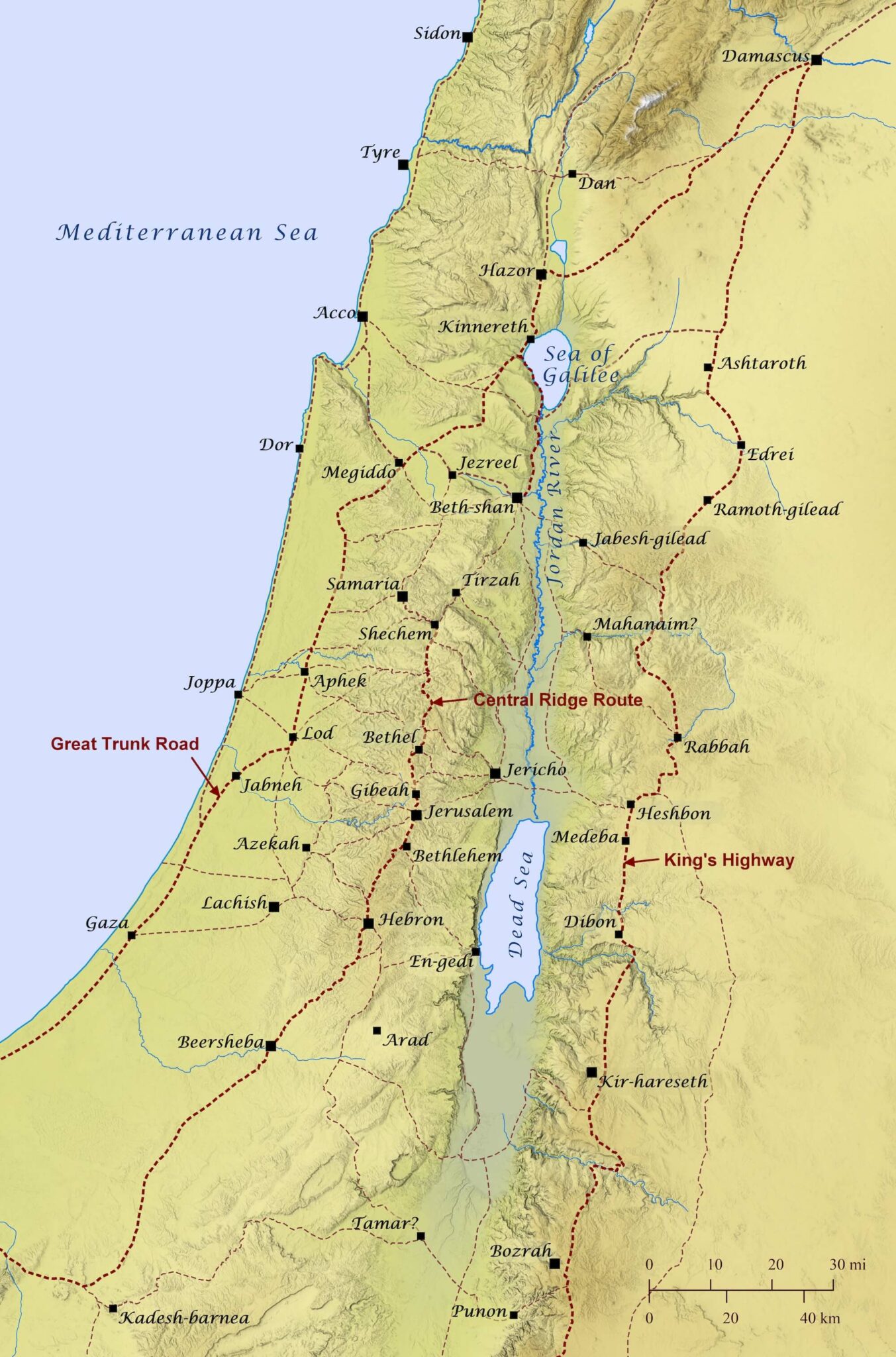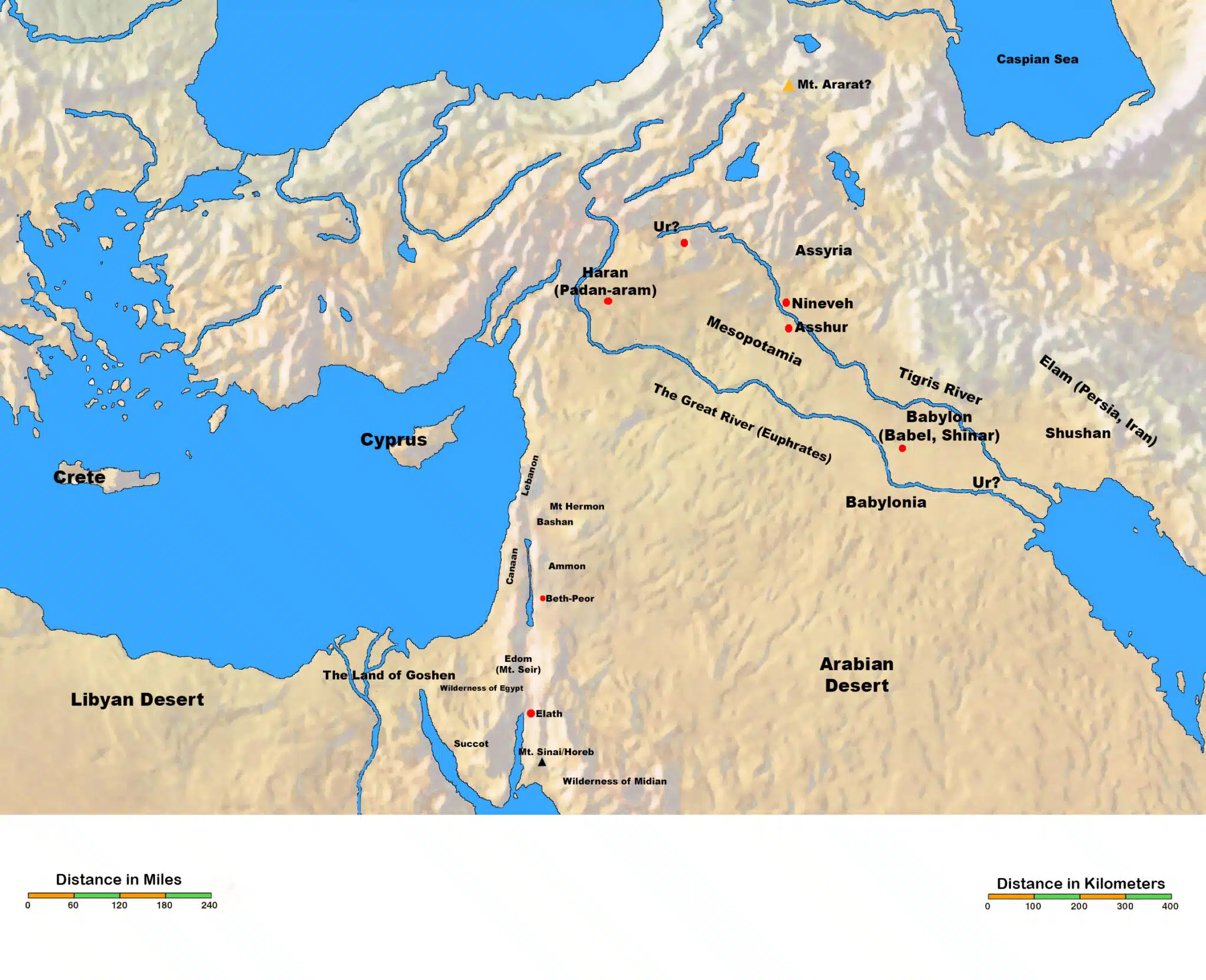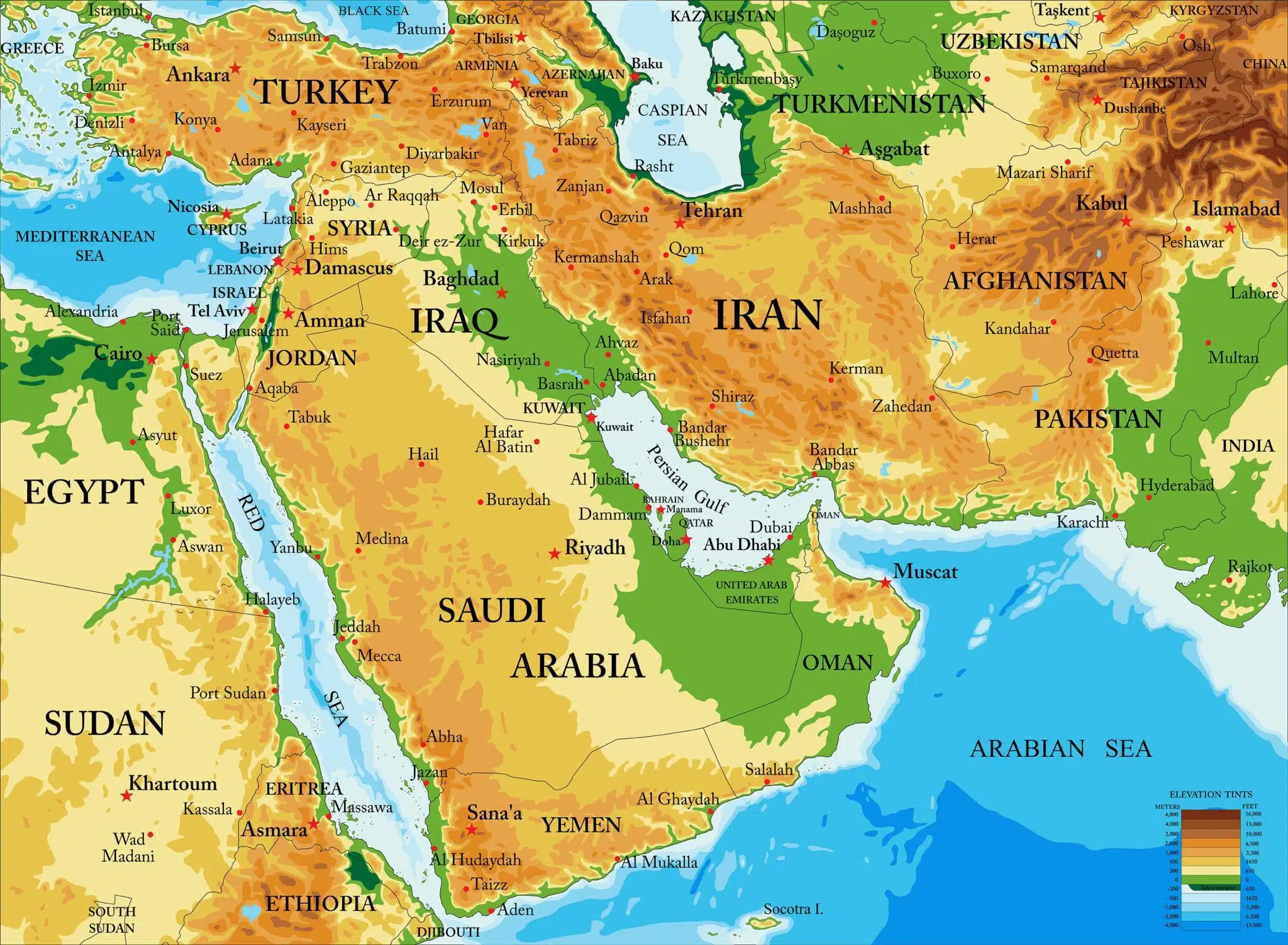After conquering four cities, King Chedorlaomer and his three allies defeated two more in route to the Jordan plains. Then they engaged the five allied kings of the Jordan Valley.
The Kings from the east followed the entire length of the “Kings Highway” (Numbers 20:17, 21:22) that ran in a straight line through the hill country east of the Jordan from north to south. They traveled behind the mountains emerging south of the Jordan Valley at El-paran (e.g., Elath on the Gulf of Aqabah, the northern tip of the Red Sea). At this time, the invaders are about 100 miles south of the Dead Sea. Then they turned back and came to En-mishpat. The invaders were heading to the northwest, so they can attack from the west, which would be an unexpected direction for an invading army. En-mishpat is another name for Kadesh. It means “spring of judgment or justice.” Kadesh is located west of Elath in the southwest Negev (e.g., north Sinai/southern Israel) and was later called “Kadesh Barnea” (Numbers 13:26, 20:16, 32:8).
Continuing their practice, they marched along defeating cities along the way. In the sixth and final battle, Chedorlaomer defeated the Amalekites. The Amalekites were desert people and a notorious enemy of Israel (Exodus 17:8-16; Deuteronomy 25:17; 1 Samuel 15:2). The origin of the Amalekites is traced to Amalek, son of Eliphaz and grandson of Esau (Genesis 36:11-12; 1 Chronicles 1:36).
The Amorites, who lived in Hazazon-tamar were the sixth and last people conquered by the Eastern Kings in route to the plains of Sodom. Hazazon-tamar is midway on the western shore of the dead sea, an oasis in the wilderness of Judah (Joshua 15:62).
Although there is not an account of the fight itself, the five Kings of the Jordan Valley fail to repel the alliance of the eastern four Kings – Four kings against five. Consequently, the cities of Sodom and Gomorrah are plundered. The four-member confederation of eastern kings were willing to endure this extreme effort requiring the Jordan Valley cities to resume paying their tribute. This is likely due to the lushness of the area, meaning they had substantial wealth to be taxed. This material wealth was also observed by Lot.
Biblical Text
7 Then they turned back and came to En-mishpat (that is, Kadesh), and conquered all the country of the Amalekites, and also the Amorites, who lived in Hazazon-tamar. 8 And the king of Sodom and the king of Gomorrah and the king of Admah and the king of Zeboiim and the king of Bela (that is, Zoar) came out; and they arrayed for battle against them in the valley of Siddim, 9 against Chedorlaomer king of Elam and Tidal king of Goiim and Amraphel king of Shinar and Arioch king of Ellasar—four kings against five.
Check out our other commentaries:
-
Genesis 24:20-27 meaning
After Rebekah waters the camels, Abraham’s servant asks her who she is. She tells him she is the daughter of Bethuel, the son of Milcah...... -
Nahum 2:1-2 meaning
Nahum urges the city of Nineveh to be on guard and be ready for battle because the enemy is approaching....... -
Daniel 7:19-22 meaning
Daniel asks the Interpreter about the boastful horn who wages a war against God’s people. Daniel sees that God will judge the horn and give...... -
Ecclesiastes 12:1-5 meaning
Solomon challenges the young to remember God with a perspective that embraces both the brevity of life and the certainty of judgment....... -
Romans 4:23-25 meaning
Abraham was credited as righteous in God’s sight because of his faith. If we have faith that Christ died for our sins and was raised......





